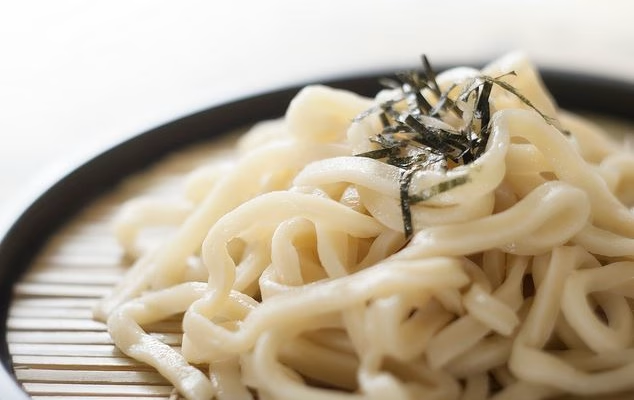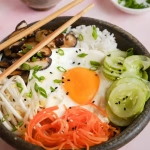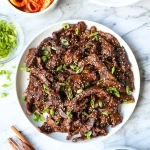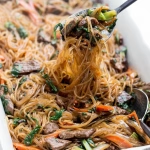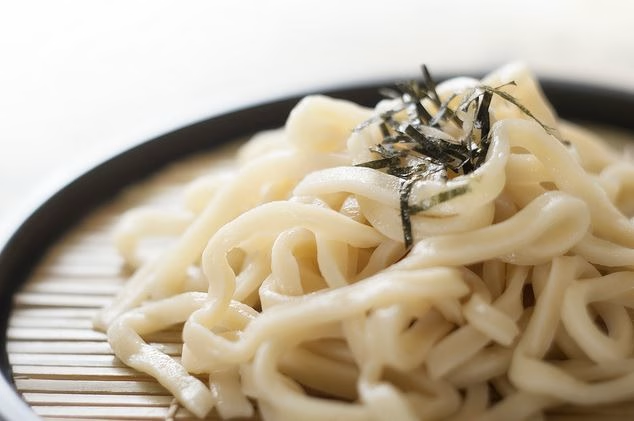
Have you ever tried Dotori Guksu (Acorn Noodles)? These delightful noodles, made from acorn flour, are a unique and traditional dish originating from Korea. Dotori Guksu has gained popularity not just for its distinctive earthy flavor but also for its health benefits, being low in calories and rich in nutrients. The texture of these noodles can vary from chewy to soft, depending on how you prepare them. In this article, you will learn about the ingredients needed, how to make Dotori Guksu (Acorn Noodles) at home, recipe variations, and some tips for perfecting your dish. Are you ready to dive into the world of acorn noodles?
Ingredients
| Ingredient | Measurement | Description |
|---|---|---|
| Acorn Flour | 1 cup | Derived from crushed acorns, acorn flour adds a unique nutty flavor and is gluten-free. |
| Water | 1/2 cup | Filtered water ensures the dough is well-hydrated, making it easier to work with. |
| Salt | 1/4 teaspoon | Enhances the overall flavor of Dotori Guksu (Acorn Noodles). |
| Vegetables (carrots, zucchini, etc.) | 1 cup, chopped | Fresh veggies add color, texture, and nutrition to your acorn noodle dish. |
| Sesame Oil | 1 tablespoon | Provides a fragrant aroma and depth to the Dotori Guksu (Acorn Noodles) sauce. |
| Soy Sauce | 2 tablespoons | Adds a savory taste and richness to the overall dish. |
| Fresh Garlic | 2 cloves, minced | Enhances the aroma and depth of flavor in Dotori Guksu (Acorn Noodles). |
| Green onions | 2, chopped | Gives a fresh, crunchy element, perfectly complementing the dish. |
Step-by-Step Instructions
- Prepare the Dough: In a medium bowl, mix 1 cup of acorn flour, 1/2 cup of water, and 1/4 teaspoon of salt until a smooth dough forms. Knead it for about 5 minutes until it’s pliable.
- Roll out the Noodles: On a floured surface, roll out the dough into a thin sheet. Cut the sheet into your desired noodle shape—thin strips work best for a traditional look.
- Cook the Noodles: In a pot, bring salted water to a boil. Add the cut noodles and cook for 3-5 minutes, or until they rise to the surface. Drain and rinse under cold water to stop the cooking process.
- Sauté the Vegetables: In a pan, heat 1 tablespoon of sesame oil over medium heat. Add 2 minced cloves of garlic and cook for about a minute until fragrant. Then, toss in your chopped vegetables and stir-fry for 3-4 minutes.
- Combine and Serve: Add the cooked noodles to the pan with veggies. Pour in 2 tablespoons of soy sauce and toss everything together. Garnish with chopped green onions and serve hot. Enjoy your homemade Dotori Guksu (Acorn Noodles)!
Pro Tips
- Mix Flour: Consider combining acorn flour with regular flour for a slightly different texture if you’re new to working with acorn noodles.
- Experiment with Sauces: Dotori Guksu can taste great with a variety of sauces. Try adding a bit of gochujang (Korean chili paste) for some heat.
- Fresh Ingredients: Always use fresh vegetables for more vibrant flavor and nutrition.
- Slow Cooking: For deeper flavor, you can slow-cook the sautéed vegetables before combining with the noodles.
Nutritional Information
| Nutrient | Per Serving |
|---|---|
| Calories | 220 |
| Protein | 6g |
| Carbohydrates | 40g |
| Saturated Fats | 1g |
| Fiber | 4g |
| Cholesterol | 0mg |
| Sugars | 2g |
| Total Fats | 5g |
FAQs
What is the best way to store Dotori Guksu (Acorn Noodles)?
You can store the cooked Dotori Guksu in an airtight container in the refrigerator for up to 3 days. Reheat in a pan with a touch of water or oil.
Can Dotori Guksu (Acorn Noodles) be made vegan or gluten-free?
Yes, Dotori Guksu is naturally vegan and gluten-free, primarily made with acorn flour. Just ensure any sauces used are also gluten-free.
What are the best side dishes to serve with Dotori Guksu (Acorn Noodles)?
Pair your noodles with Korean side dishes like kimchi, pickled radishes, or a light salad for a balanced meal!
How long does it take to prepare Dotori Guksu (Acorn Noodles)?
Preparation and cooking time for Dotori Guksu is roughly 30 minutes, making it a quick and delicious meal option!
Can I freeze Dotori Guksu (Acorn Noodles) for later?
Yes! You can freeze uncooked or cooked noodles. Just ensure they are tightly wrapped to avoid freezer burn.
What are some variations of Dotori Guksu (Acorn Noodles)?
You can customize Dotori Guksu by adding proteins like tofu, chicken, or beef, or by using different seasonal vegetables.
Are there any health benefits to eating Dotori Guksu (Acorn Noodles)?
Absolutely! Acorn flour is high in antioxidants and fiber, which can help with digestion and overall health.
Can I make Dotori Guksu (Acorn Noodles) spicy?
Yes! Feel free to customize your dish by adding chili flakes or gochujang to the sauce for a spicy kick!
Making your very own Dotori Guksu (Acorn Noodles) can be a fun and rewarding experience. From understanding the ingredients to the step-by-step preparation, this recipe can easily become a beloved staple in your kitchen. Remember, cooking is all about experimenting, so don’t hesitate to try your own variations or tweaks. Give this recipe a shot, and let us know how it turns out in the comments below! Happy cooking!

